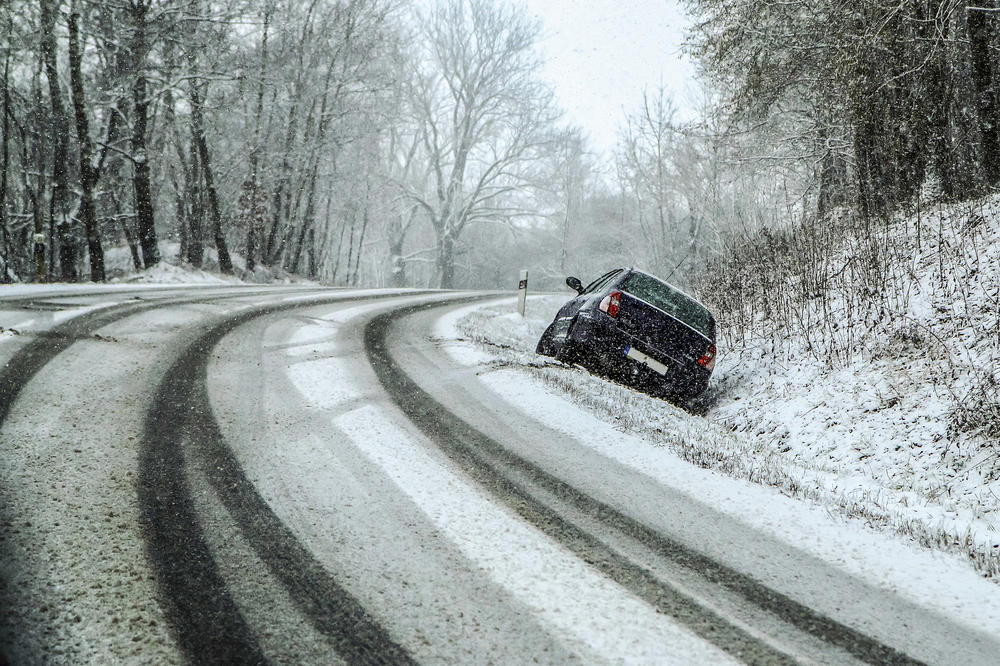The Danger Experts
A research team is examining how weather influences the likelihood of traffic accidents – and what we can do to help
Nov 05, 2020
When the streets are wet or icy, the number of weather-related traffic accidents increases the faster we drive.
Image Credit: Shutterstock/JakubD
Police statistics show that there are around 370,000 serious traffic accidents in Germany every year. That’s around 1,000 a day. In the worst cases, people are injured or even killed. Even minor collisions can mean a significant financial burden to those involved, for example, through damage to vehicles. “According to police statistics, more than 9 percent of these accidents are at least partly caused by the weather,” says Nico Becker.
Becker, who received his doctorate in meteorology from Freie Universität Berlin, is currently investigating the relationship between the weather and traffic together with researchers from Germany’s national meteorological service (Deutscher Wetterdienst, DWD) and the Max Planck Institute for Human Development. According to Becker, nearly all weather-related accidents involve slippery or icy surfaces, while the remainder come down to factors such as low sun, fog, or heavy winds.
Predicting Accidents Can Help to Avoid Them
“You’re most likely to have a weather-related traffic accident if you leave the house at six in the morning on a workday in January or February,” says Becker. He explains that during these months, the temperature generally dips to its lowest just before sunrise. In winter, this coincides with the beginning of rush hour, not to mention snow or ice on the roads. As many as 30 percent of all traffic accidents that happen in the early hours during January and February are partly caused by the weather, says Becker.
Can anything be done to mitigate this factor? According to Becker, we would need to be able to link predictions of dangerous weather with the specific effects it will have on traffic. It is also essential that the public becomes more aware of how weather and traffic are connected. Nico Becker’s team is the first to try and model this kind of data in order to predict the probability of road traffic collisions. Their joint research project is being carried out under the auspices of the Hans Ertel Center for Weather Research with funding from the DWD.
High Resolution Weather Radar Data for All of Germany
For their investigation into how the weather, traffic volumes, and accidents are related, the team uses extensive data sets to create complex models. These require an immense amount of computer memory in order to create high-resolution weather radar data for the whole of Germany, for example. These data sets are then linked to police records that are broken down into the cause of the accident, where and when it took place, and other criteria.
The third component is traffic volume on major highways and state roads. These data are collected by the German Federal Highway Research Institute for trucks, cars, and motorbikes using road tubes. “The main factors that influence traffic volume are the time of day and the day of the week,” says Becker. “We can also calculate for each region the influence of temperature, precipitation, and cloudiness on traffic volume as well as the likelihood of traffic collisions.”
Becker explains how important it is to be able to predict weather-related accidents, and ultimately, to avoid them by giving people adequate warning: “When doctors diagnose illnesses, they generally name the probable effects of the illness and recommend how the patient should behave in order to minimize problems. The diagnosis, the likely effects, and the recommendations are all given based on the same medical expertise. No doctor would ever just say, ‘Here’s my diagnosis – now go away and figure out what to do about it.’”
But when it comes to weather warnings, this is generally speaking exactly what tends to happen. Thanks to their knowledge and experience, institutions like the DWD are able to give precise forecasts of what the weather is most likely to be like. But there is no way to provide exact prognoses for the consequences of extreme weather events or how people will behave when driving.
Leave the Car at Home if You Can
When it comes to storms, storm warnings, or storm damage, however, it is relatively easy to give advice, says Becker. Although predicting weather-related accidents is complex, there are more options available to respond. But how can recommendations be formulated for maximum effect so that they also function as warnings? To find out, members of the Max Planck Institute for Human Development are carrying out surveys with focus groups in the next few months to find out how people behave in traffic under specific conditions.
“For example, we’ll show one group the weather data for a specific journey from A to B,” explains Becker. “But the control group will also see the probability of traffic collisions on that same route.” Does the additional information encourage people to change their travel plans? Would it help to offer recommendations, and if so, how should these be worded? Is it more effective to tell people that they are a hundred times more likely to have an accident in this scenario, or is it better just to warn them about black ice on the roads? “Our long-term aim is to change weather warnings so that they also contain information about what effect the weather event is likely to have, and thus to help people make better decisions,” says Becker. This might mean encouraging people to build in more time for their journey, to adapt the way they drive, or to leave the car at home if they can – not just on workdays in winter at six o’clock in the morning.
This text originally appeared in German on October 4, 2020, in the Tagesspiegel newspaper supplement published by Freie Universität.

